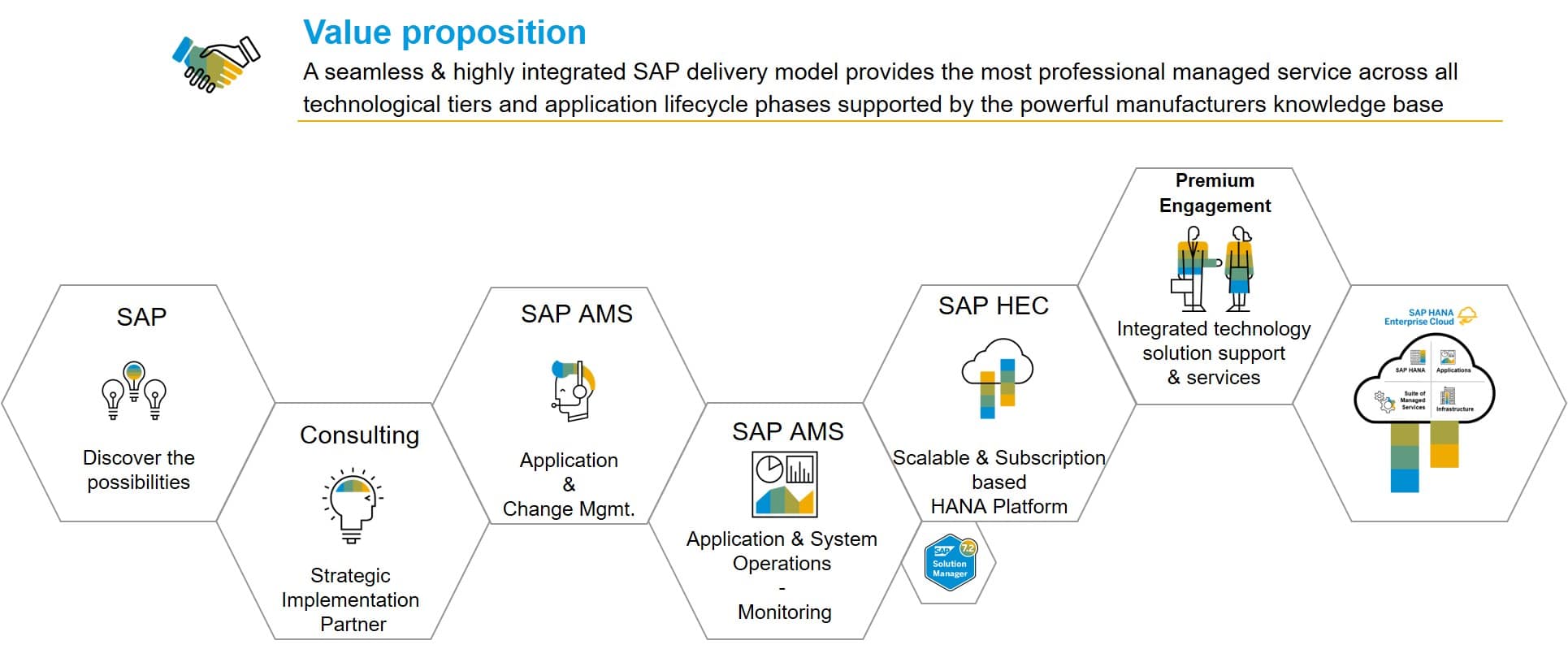A journey to the cloud – Target operating model for banking in the cloud
Banking in the Cloud – or even banks going to the cloud. Not long ago, this was pretty unlikely to happen. Such a conservative branch is a tough cookie for cloud business.
With all regulatory restrictions and the questions for security not every bank is really keen on moving to the cloud. A first step is our public cloud offering, which is can be a stepping stone for banks to invest in a cloud solution. Financial institutes are in need to react quickly to a changing market. Not only their products need to change, also the IT needs to adapt. To be more flexible and agile and able to cover all necessary demands – SAP offers a tailored solution
So what happens after the customer has decided to make the cloud move – how do they integrate a single solution in their already existing solution landscape?
Let’s take a look at an example with a customer example:
A customer wants to outsource a complete division of its company and they want to start completely over with a greenfield approach. This will be a complete 180 degrees approach on the normal way how a “normal” SAP landscape would look like.
Nothing on-premise, but everything will be covered by a service – The customer gets several Public Cloud and Private Cloud offerings. All financial related systems are designated to go into the HANA Enterprise Cloud and maintained by SAP AMS.
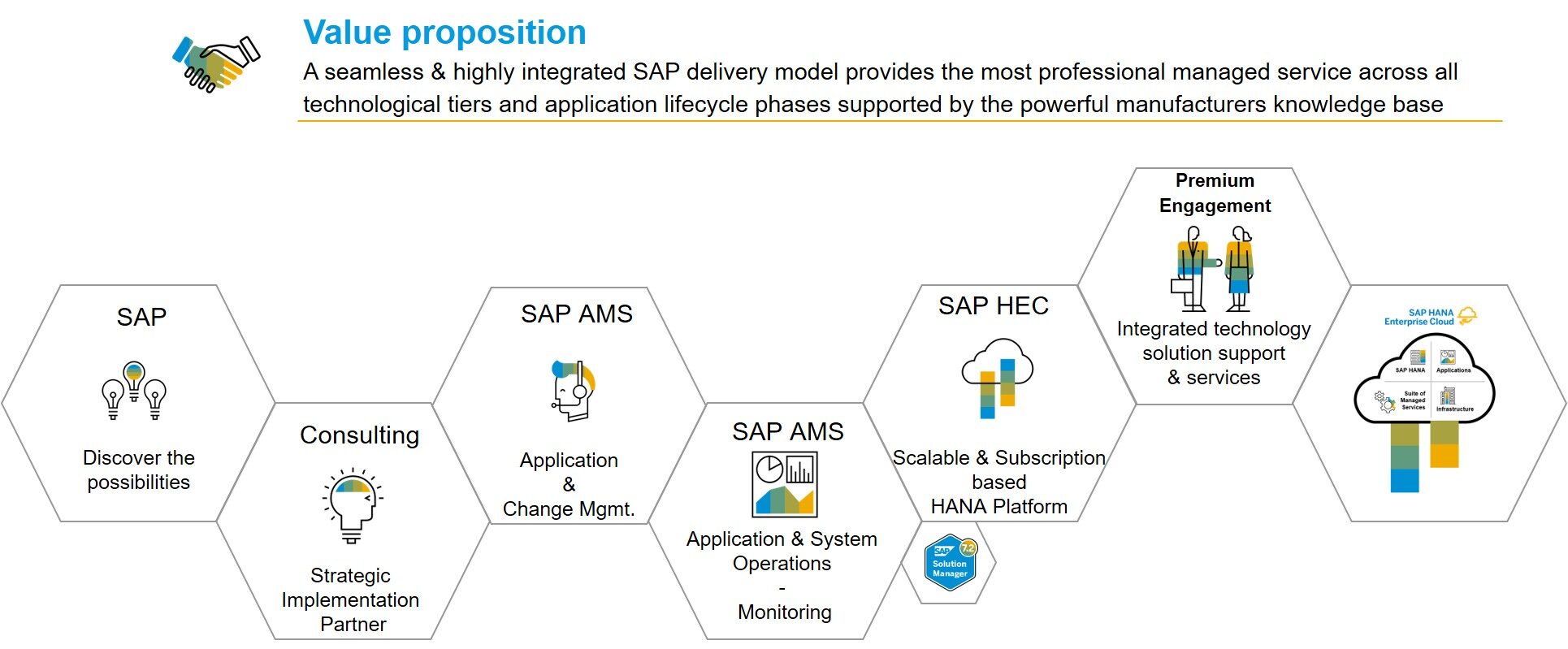
Where does the Customer start – where is SAP coming in?
SAP can deliver a complete Target Operating Model – which covers the strategy, the governance and organizational changes. It is packed with best practices and shows the customer what he has to cover during the transition.
On the process perspective – it doesn’t matter if the customer runs preferably on HEC or on other offerings like Google Cloud Platform or Amazon Web Services – the governance will be different because GCP and AWS are an IaaS Service on the other hand SAP HANA Enterprise Cloud is a managed private cloud called PaaS or even further SaaS.
What SAP does in the cloud
SAP best practices:
- Consultation (Clouds) and Service Models
- Data privacy and Cyber security
- Assessments for regulatory demands
- Technical and organizational measures
- IT Capability Framework
With our capability matrix; SAP is offering a industry-first go-to-market and digital transformation approach, supported by comprehensive road map and integration for any deployment model.
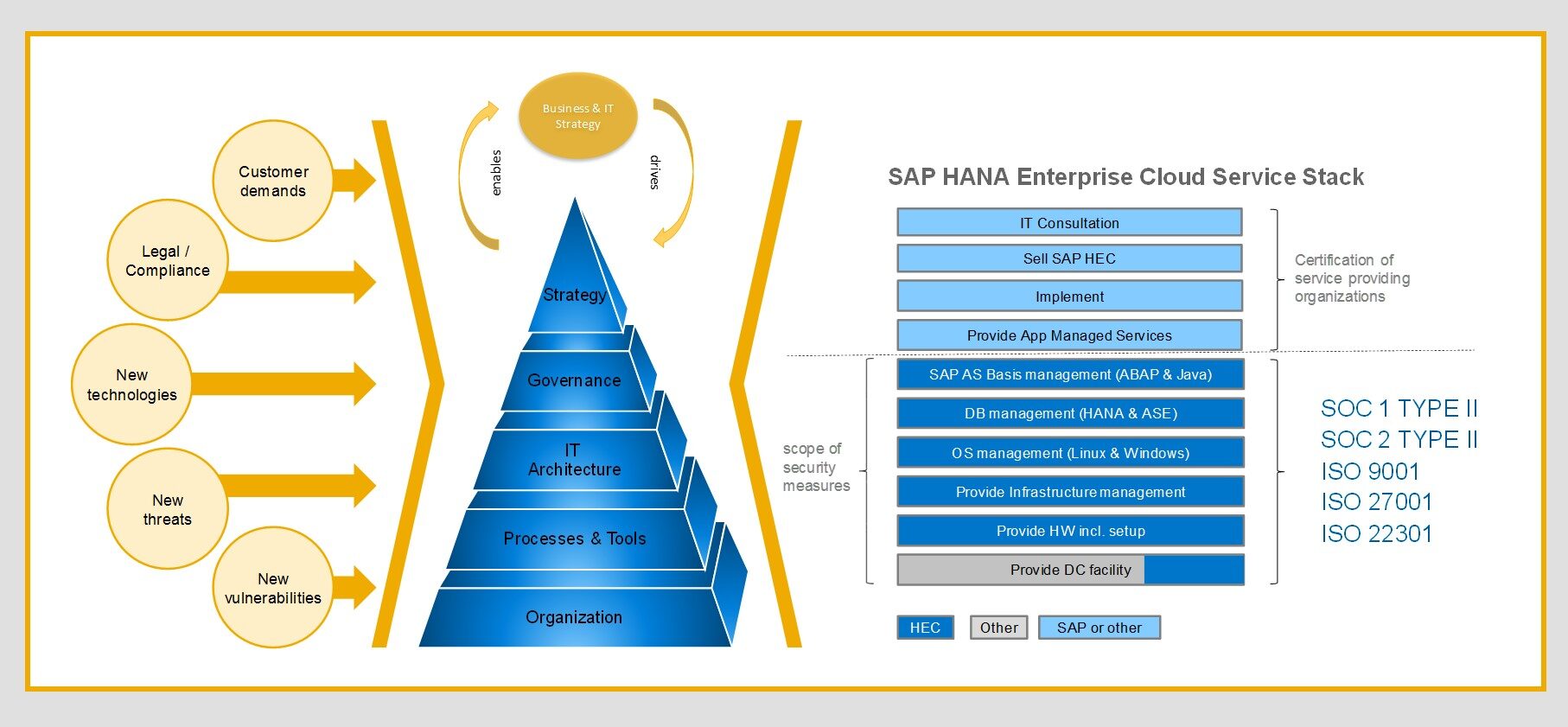
This model is build on the approach – “Think Global – Act Local”
Like the SAP strategy on a global template – we deliver an overall strategy with local specialties
Strategy
Lets Talk about the strategy first – What is the actual goal for the customer? Or not talk about the goals of the customer first – These are the facts for a disruptive change in today’s IT strategy:
The rules have changed in the game, the buyers market is becoming a sellers market. The behavior of the customer has changed and a bank must react quickly and need to adapt to the needs of the customer. Nobody waits until the bank comes up with a new idea. The financial industry needs to focus on the customer centricity and value generation.The next aspect is reducing costs and complexity of the IT landscape to free up resources and simplify the processes.
The classical way to operate a SAP system is on-premise – so everything is owned by the customer and administrated by their own teams. SAP can support the customer by setting up processes, tools and methodologies e.g. RUN SAP like a Factory, Solution Manager and SAP Activate. The customer builds and ICC and OCC to support the classic CCOE approach.
In order to meet the requirements for a cloud transformation, SAP offers best practices to add several more service to their customers. The CCOE with SAP Basis can change from a support entity to a service delivery department. It can shape the enterprise cloud strategy and can become a cloud service provider management unit.
This part of the Target operating model provides a vision of CCOE and its collaboration model inside of the customer organization and against one or several service provider (e.g. SAP).
Governance
This part covers the guiding principles regarding the integration of IT components and processes into customer’s IT operating model. During our assessment, we will consider the ICC & OCC governance related to Cloud service provider management with focus on release management, incident management, resilience & availability.
Governance is what everybody dislikes in an agile environment, it means bureaucracy, a lot of it. But we have so it a little bit more divers. Yes there will be rules, but they will make IT life a lot more safer and easier in the end
It will give the customer a brief outlook on what will change in his organization and address the challenges for an IT department to become a service provider and not only the guys who solve computer issues.
The outcome of this section will lead to a tailored model for roles and responsibilities fed by SAP Best practices and predefined role profiles for single functions and governance bodies.
IT Architecture
Now it is time for a technical discussion – eventually the strategy is clear and the transformation is on its way, the theoretical approach needs to become reality as a system landscape. The already defined enterprise architecture will be used to create a bill of materials for our HEC service with a proper sizing for concurrent user, volume of transaction, data storage size, RAM size for all HANA servers.
This part of the workshop will be carried out with the support from one of our Cloud architects to provide a complete view of our service offering. The outcome should provide a transformation strategy for the current system landscape, the provided services from SAP and a plan to cover continuous business operations.
We will also provide a sample structure for KPIs, Goals and Action Items which will end in a preparation Roadmap.
Process & Tools
The part where the famous SAP Solution Manager makes its entrance. Every governance or strategy makes sense on a sheet of paper, but the customer needs also tool support. When the customer decides to move to the HANA Enterprise Cloud and/or SAP public cloud offerings, a proper integrated tool makes even more sense.
During the workshop for the 4th layer of our capability matrix, we will address all standard processes and evaluate the tools for it. This is not a sales pitch for SolMan, if the customer already has some working software solutions in place, we will encourage him to use them further and assess the possibility of connecting those tools with the new target landscape.
This part of the workshop series covers the bread-and-butter business of a CCOE; Incident and Problem Management, Change and Release Management, Event Management and Error handling.
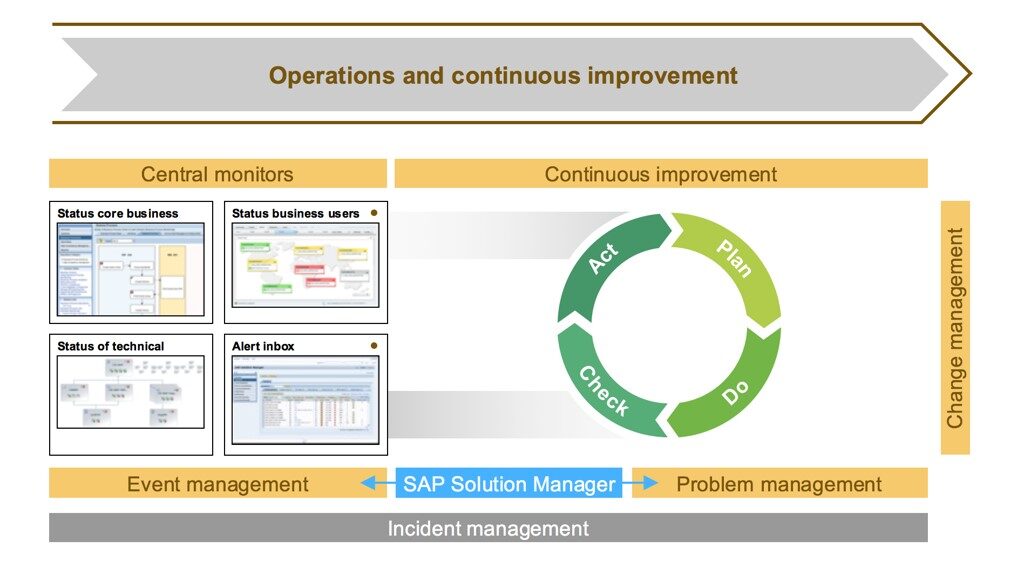
After the KPIs were set in the previous part of the workshop, the focus is on the SLAs and the Service Catalogue. It is necessary to define the service which will be delivered by the future IT department and which will be coming from a BPO service.
The most relevant part of process & tools is the security and risk assessment. For Banks in Germany, it is crucial thing to comply to legislative requirement like MaRisk and BAIT issued by the BaFin.
SAP complies to all conditions regarding MaRisk and BAIT, all cloud offerings are compliant to these requirements. (Please get in contact with me, if you want to more about that topic and other countries)
Organization
Last but not least and very important – the 5th layer of our model. How is the complete organization affected by a cloud journey? Together with the customer, we develop a new organizational model to get a better interaction between the new IT department, business and cloud service provider. The new model will show what role the power user concept will bring to the customer and how the communication from the business to the IT staff will be handled.
Lets take a shore look on different approaches of the organization structure:
Centralized
All IT matters will be handled in one location and the help desk is located in e.g. Frankfurt. The power user are reporting to this central entity. The customer only needs one IT department and can bundle everything in one location and is able to save money, the downside of it is, that local legal restriction for banks can forbid this kind of model, because the support people need to be in the same country.
Decentralized
Every location has its own help desk with own staff, in some reasons this is necessary to fulfill legal restriction but it is also the most expensive approach for a customer organization.
Whether it is centralized or decentralized, if you are also dealing with cloud or outsourcing providers, the customer needs an entity to control those delivery units.
Virtual
A common approach in an AMS scenario with local super users, is a virtual centralized help desk. The customer itself has its own power user structure and the AMS provider delivers the help desk functionality.
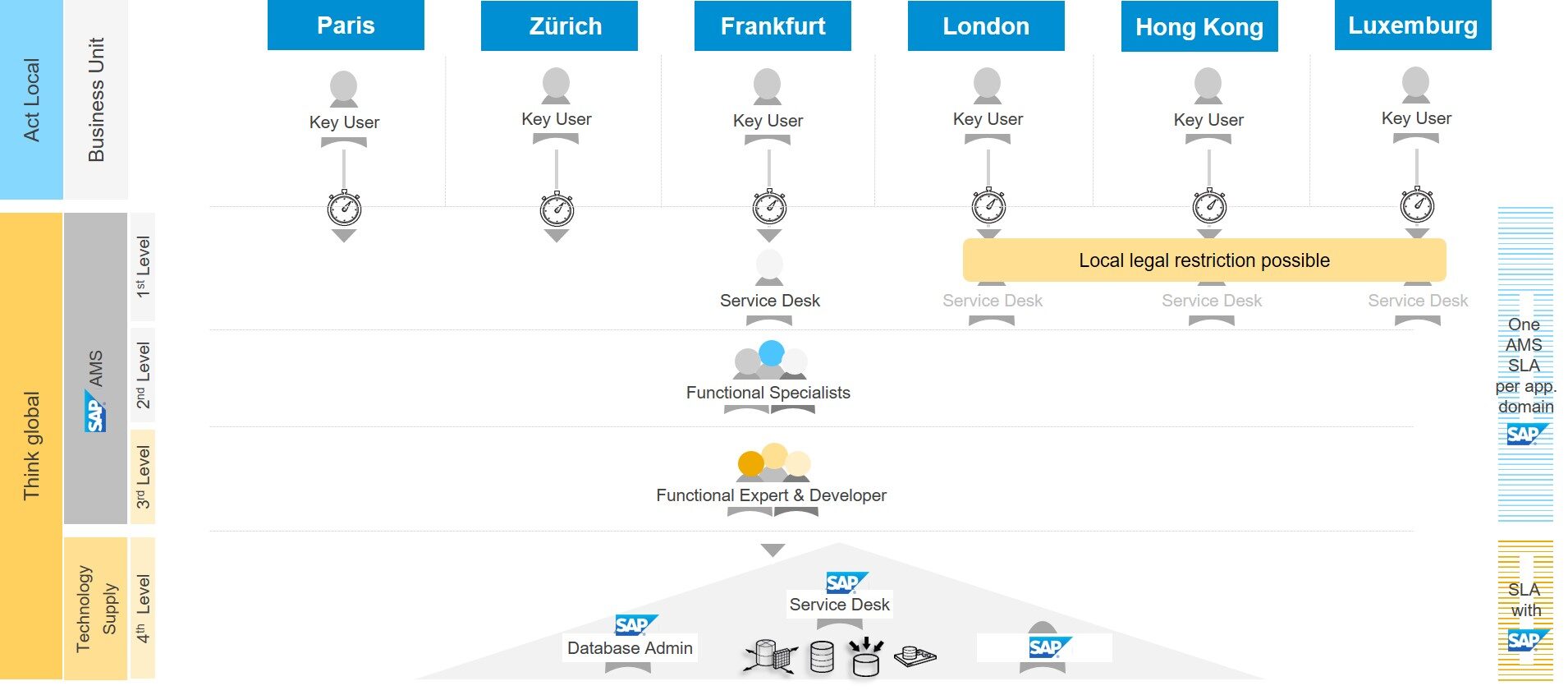
This is where we come back to the initial idea of “Think Global – Act Local”.
Those Key user are only spearhead in the new organization, furthermore there a several other roles which can be build in the new structure. It depends on the motivation of the customer how big the retaining organization will be. But everybody has to keep in mind, that the customer has to fulfill certain regulatory requirements regarding MaRisk (in Germany).
SAP can deliver a predefined set of role profiles which can cover all necessary tasks in the company.
Benefits
In this series of workshops we will cover the complete transformation journey from on-premise to the cloud.
- Customers are able to tackle the challenges of cloud computing
- Is there a possibility to actually safe money when the customer moves to the cloud?
- How is the IT department changing? Becoming a service provider inside of the company
- Getting the real benefits from steering external partners
- Reshape the current processes and adjust existing tools
- Get a state of the art IT architecture with constant maintenance and upgrades
If you want to more about this approach and the target operating model, don’t hesitate to ask.
In one of my next blogs, i will talk about the role of SAP Solution Manager and its role in an hybrid environment.
New NetWeaver Information at SAP.com
Very Helpfull
